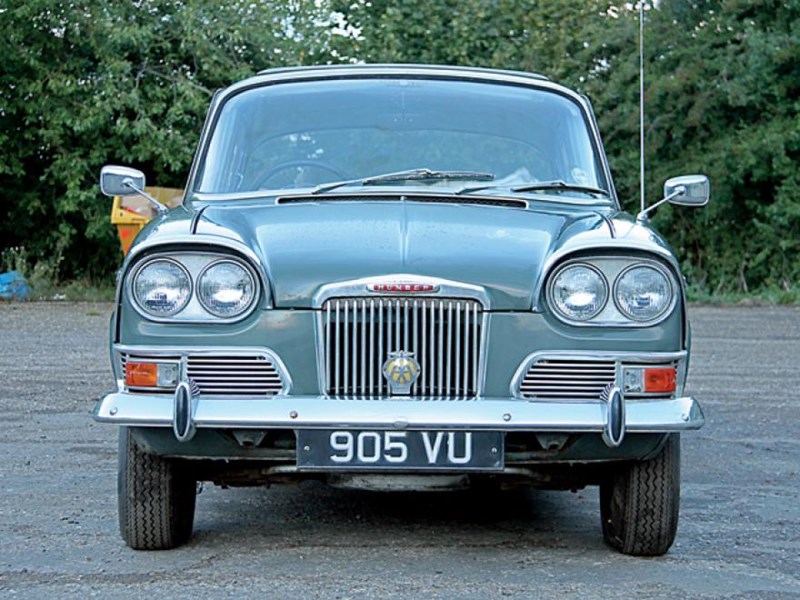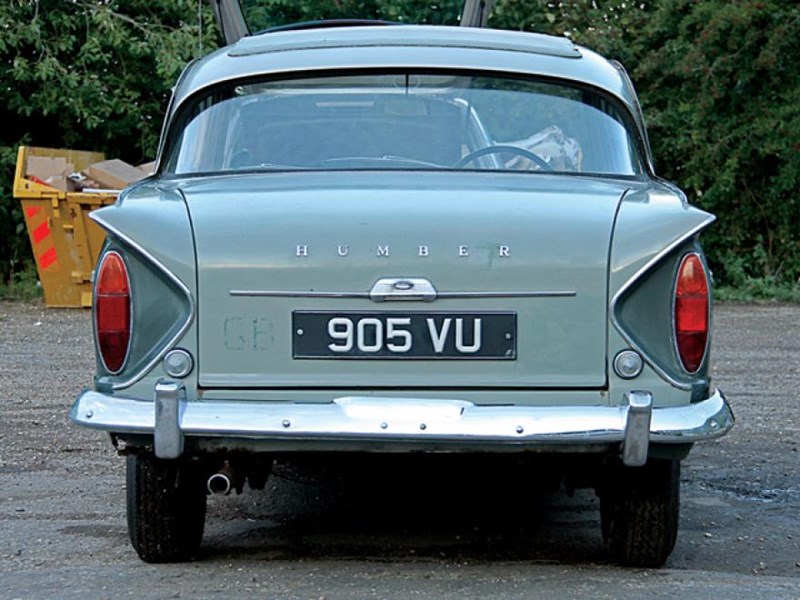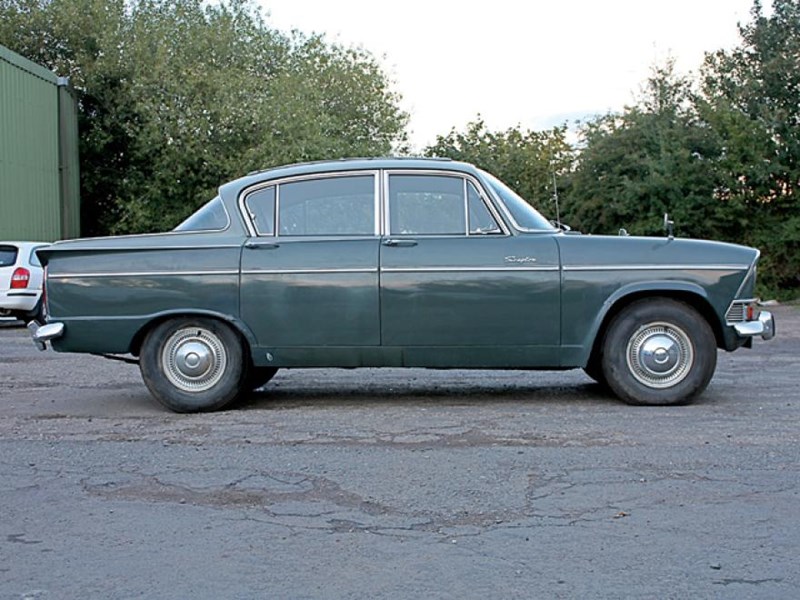Luxury saloons rarely offer greater value for money than the Humber Sceptre – especially when they make such superb everyday classics.
Some classics are criminally undervalued. Take the Humber Sceptre. So much more than a posh Super Minx, the smallest car in the Humber range was a cut above its proletarian brethren.
With its quad headlamps and uniquely raked roofline setting it apart from the Hillmans and Singers, the Sceptre straddled the chasm between family five-seater and upper-crust cruiser – a true gentleman’s express. Following on from the upgraded Mark IA (only current from 1964-65), Mark II Sceptres lost the impressive front-end styling, but gained the indestructible 1725cc engine.
For those who crave the quality and sheer elegance of the big Humber Hawks and Super Snipes, but can’t justify owning a leviathan-sized bruiser, the Sceptre makes a lot of sense. Big enough to cosset and cocoon its occupants, yet compact enough for city parking, it is still a very usable car.
However, values don’t seem to reflect the Sceptre’s versatility. Only the very best Sceptres reach the £4000 mark, while less than half that will secure a good, usable example. Sharing many parts with other Rootes products, and with the Post Vintage Humber Car Club dedicated to remanufacturing hard-to-find items, the Humber is certainly no harder to keep on the road than the majority of classics.
VITAL STATISTICS

WHAT TO LOOK FOR
1 Typically for most 1960s saloons, rust is a major concern. The sills are crucial for bodyshell strength, so inspect them carefully. Try to ascertain if cover sills have been fitted. Welded over the top of rotting originals, these allow corrosion to carry on its dirty work unnoticed.
2 There should be two jacking points located beneath each bumper at either end of the car. If these are absent or in poor condition, then expect the main chassis rails to which they attach to be in need of repair work. Rear spring hangers and chassis outriggers often suffer thanks to accumulated road muck, so check carefully.
3 Inspect the fuel tank well within the nearside rear quarter. If moisture collects here, the whole area can rapidly disappear. If the rubber drainage pipe from the fuel filler recess has split or is missing, then rainwater will be directly channelled into this problem area. Filler is a common bodge here.
4 Wheel arches are vulnerable to rust, with the arch lips often going frilly – check if everything is as it should be here. Again, see if filler is hiding any holed areas.
5 Front and rear valances can suffer, as do the door bottoms – any rippling here could indicate a poor skin repair. The small length where the scuttle and A-post join (only visible with the front door open) also rots out where leaves and debris collect. Finally, leaking front and rear screen seals can lead to the roof pillars corroding – a glass-out job to fix.
6 Brightwork should be inspected to ensure it is all present and correct – any missing pieces will be a headache to track down, as very few of these parts were shared with the Super Minx and Singer Vogue. The same goes for the interior trim – although made from hard-wearing vinyl, splits and tears will require repair. Also inspect the unique dashboard.
7 The 1592cc engine used in Mark I Sceptres is capable of more than 100,000 miles if regularly serviced. However, the 1725cc unit in the Mark II can take more than 150,000 miles in its stride, thanks in part to five main bearings (the smaller engine only having three). However, both engines can suffer from excessive crankshaft end float.
8 Mark I Sceptres were fitted with overdrive as standard – electrical problems such as a poor earth or failed relay could be behind this not functioning as it should. An automatic option, using a Borg Warner gearbox, was offered with the Mark II
– ensure that this works correctly.
9 Neglected steering boxes on high-mileage cars can wear out – oil leaks are easy to spot, but any tight spots spell replacement. Most brake parts are available new, although master cylinders are difficult to track down – fortunately, rebuild kits are available. Aside from occasional greasing, the suspension shouldn’t provide any problems.
AT THE WHEEL
The Sceptre is a particularly sturdy car. While lesser machines have a tendency to rattle and squeak along the road, the Humber feels solid as a rock. But this old-fashioned solidity comes at a price – weight. Those torquey engines are more than capable of dealing with this, but it puts the kibosh on lightning-fast acceleration, as well as frugality – don’t expect mpg to exceed the mid-20s.
The Sceptre is still reasonably keen to tackle corners so long as radial tyres are fitted, although dignified cruising is more its forté.
VERDICT
As an endearing mix of old-fashioned charm and 1960s glamour, the Sceptre is nigh-on unbeatable. No matter if you’re looking for an easy-to-live-with entry into the classic car world, or a comfortable saloon you can use every day, you could do far worse.
Although an increasingly large range of spares is on offer for these cars, there are still plenty of Humber-specific parts which could elude the home restorer. Provided a project car is largely complete, however, there’s no reason why all but the rustiest Sceptres
can’t be returned to their former glory.
Set your sights a little higher and the Humber becomes a bit of a bargain. At the moment, it seems that very little cash is needed to secure all but the best examples.


